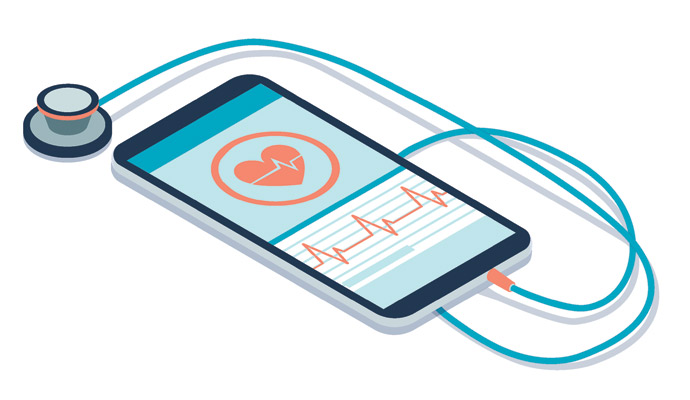Remote Support Program Led to Improvements in Blood Pressure
New research shows that patients with elevated blood pressure experienced health improvements following enrollment in a remote support program facilitated via web-based applications and telehealth.

Source: Getty Images
- A study conducted by Geisinger health system found that a 12-week remote support program led to improved blood pressure among participants, with or without the support of a dietician.
Geisinger serves a patient population of over 1 million people. It includes 10 hospital campuses, 24,000 employees, and over 1,700 employed physicians.
For this study, which was published in the Journal of the American Heart Association, Geisinger nephrologist Alexander Chang, MD, led a research team that enrolled two groups of patients, all of whom had high blood pressure, in a remote support program provided via web-based applications and telehealth.
Both groups received lifestyle guidance from the American Heart Association, but only one group participated in weekly calls with a dietician.
During the 12-week study period, both groups showed similar reductions in 24-hour systolic blood pressure. However, among those in the dietician support group, there was a greater reduction in systolic blood pressure while asleep. This group also had higher levels of self-reported physical activity, improved dietary quality, and more weight loss.
Based on these findings, researchers said they better understood how to improve blood pressure and reduce cardiovascular risk. Further, they plan to investigate ways to implement similar remote delivery programs for more Geisinger patients.
“These remotely delivered programs improved blood pressure in a manner similar to a blood pressure medication,” said Chang in a press release. “The interventions were low-cost and could be scaled to help larger groups of patients improve their blood pressure through lifestyle change.”
Various studies have provided details regarding the benefits associated with using telehealth to control blood pressure.
Research from February, for example, found that remote patient monitoring and telehealth services improved patient engagement and blood pressure control among stroke survivors. For the study, researchers divided participants into two groups, one receiving usual post-stroke care and the other receiving care through the novel Telehealth After Stroke Care strategy. The study noted that the chances of another stroke are highest at 90 days post-discharge, which is when researchers followed up with both groups.
Researchers found that the intervention group had higher engagement rates and better blood pressure control.
But certain sub-groups may not be willing to perform blood pressure monitoring outside a clinic.
Another study published in October found that although self-measured blood pressure monitoring can improve health outcomes, less than half of older adults engage in it. The study noted that previous research has shown that self-measured blood pressure monitoring led to drops in blood pressure.
The researchers found that self-rated mental health, clinician recommendations, and ownership of home blood pressure monitoring devices were the primary factors connected to self-measured blood pressure monitoring.
